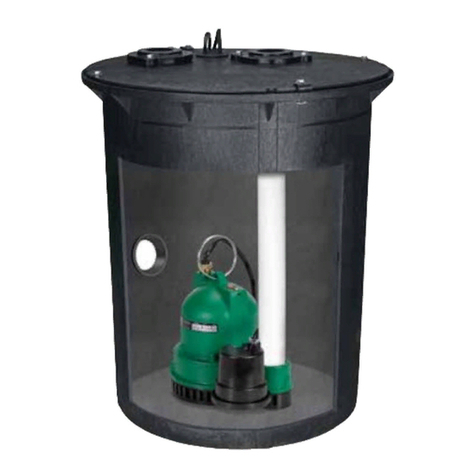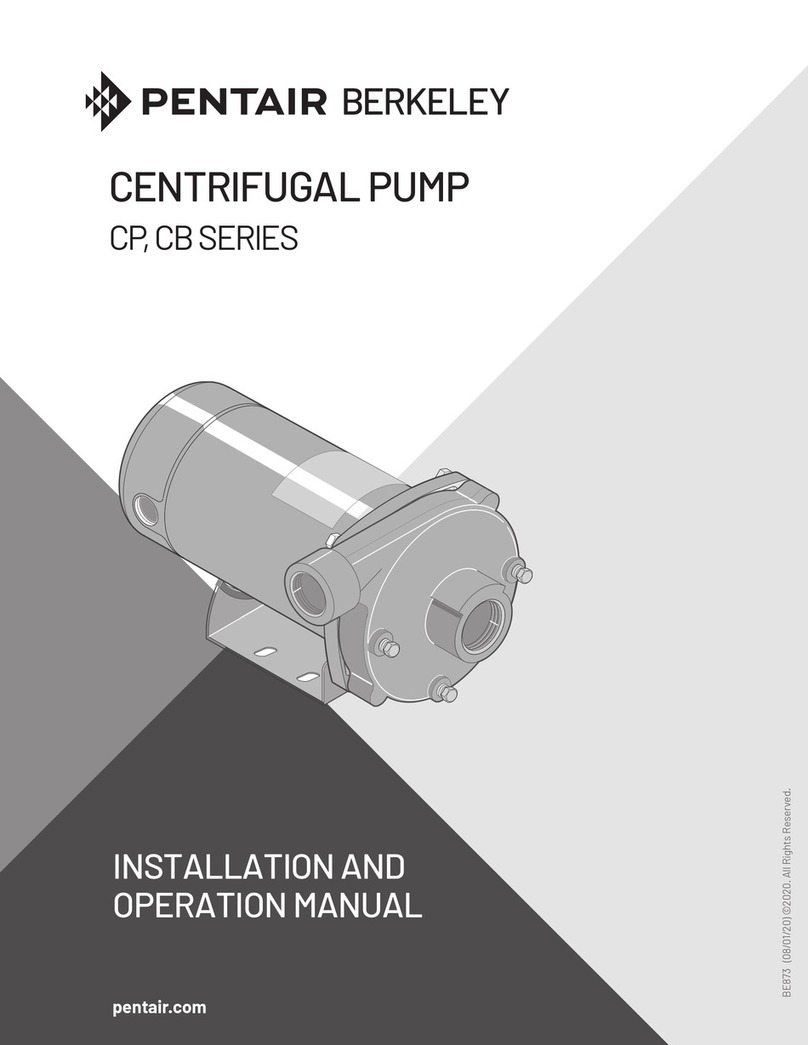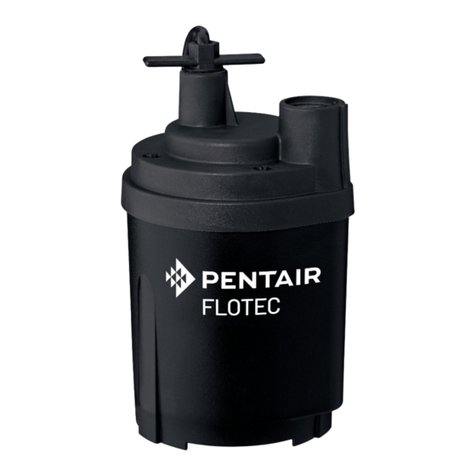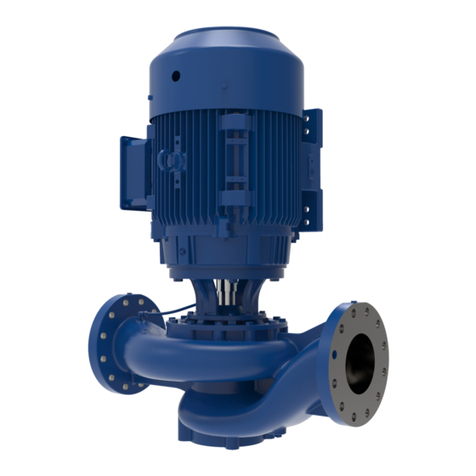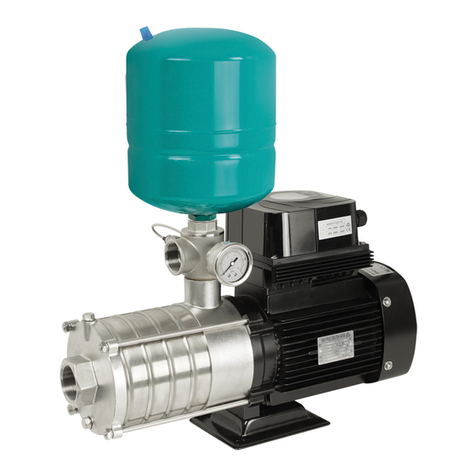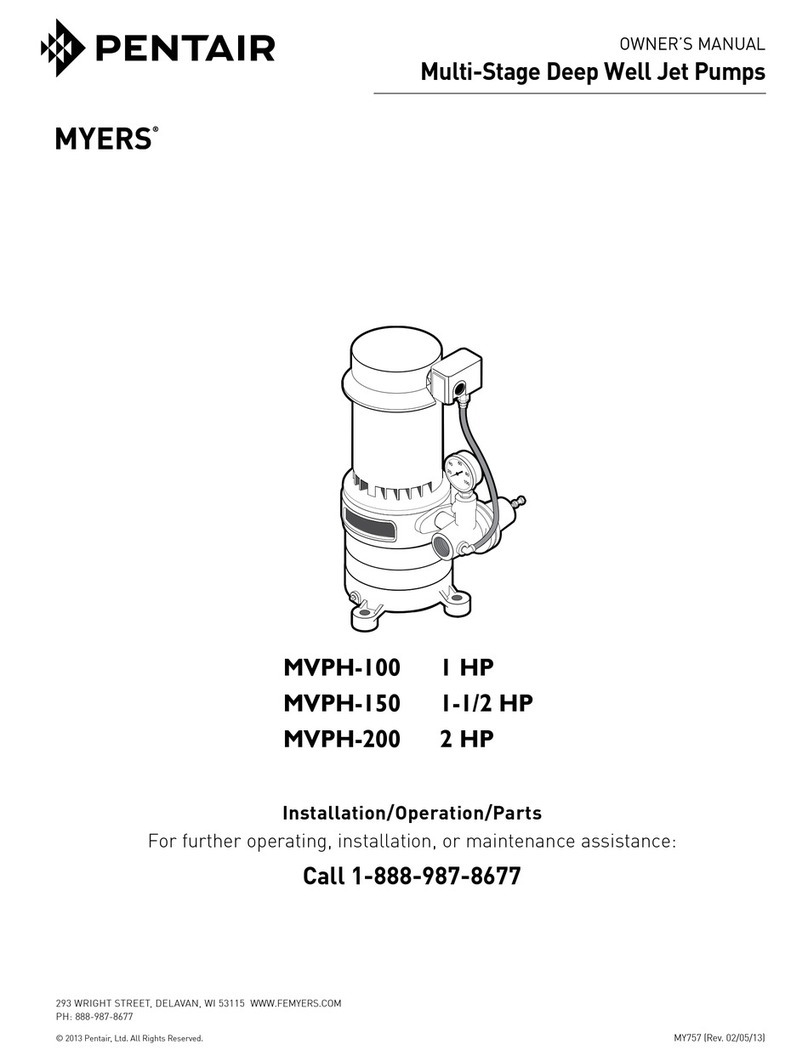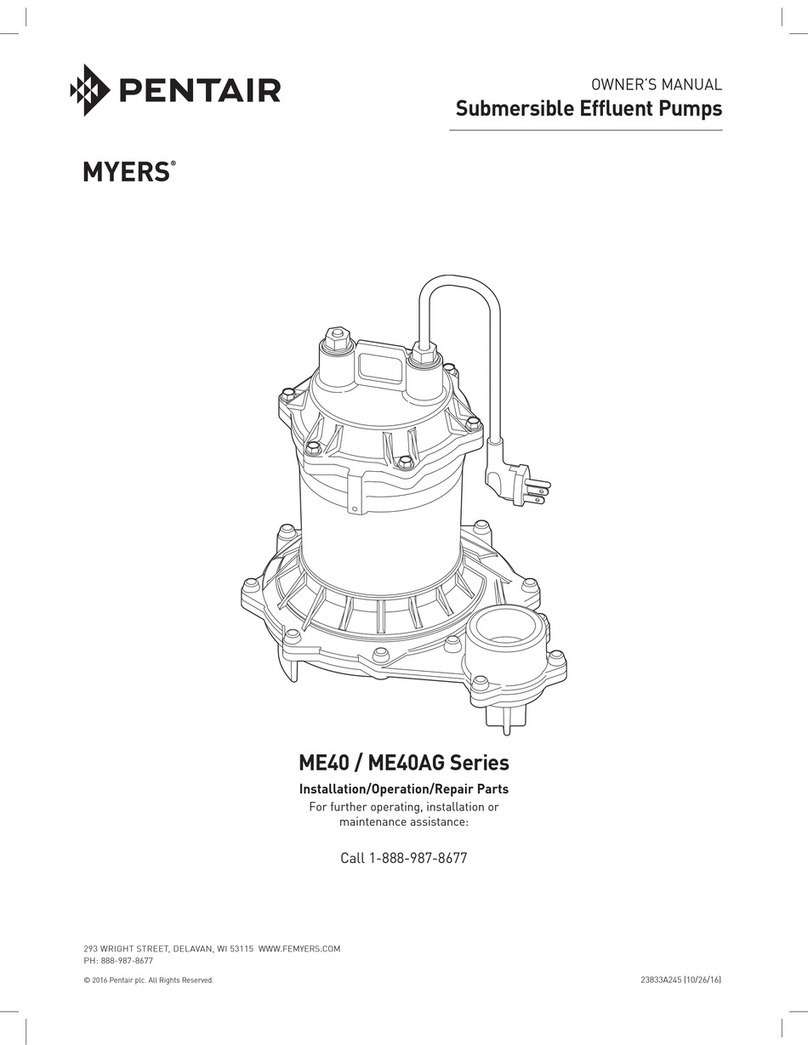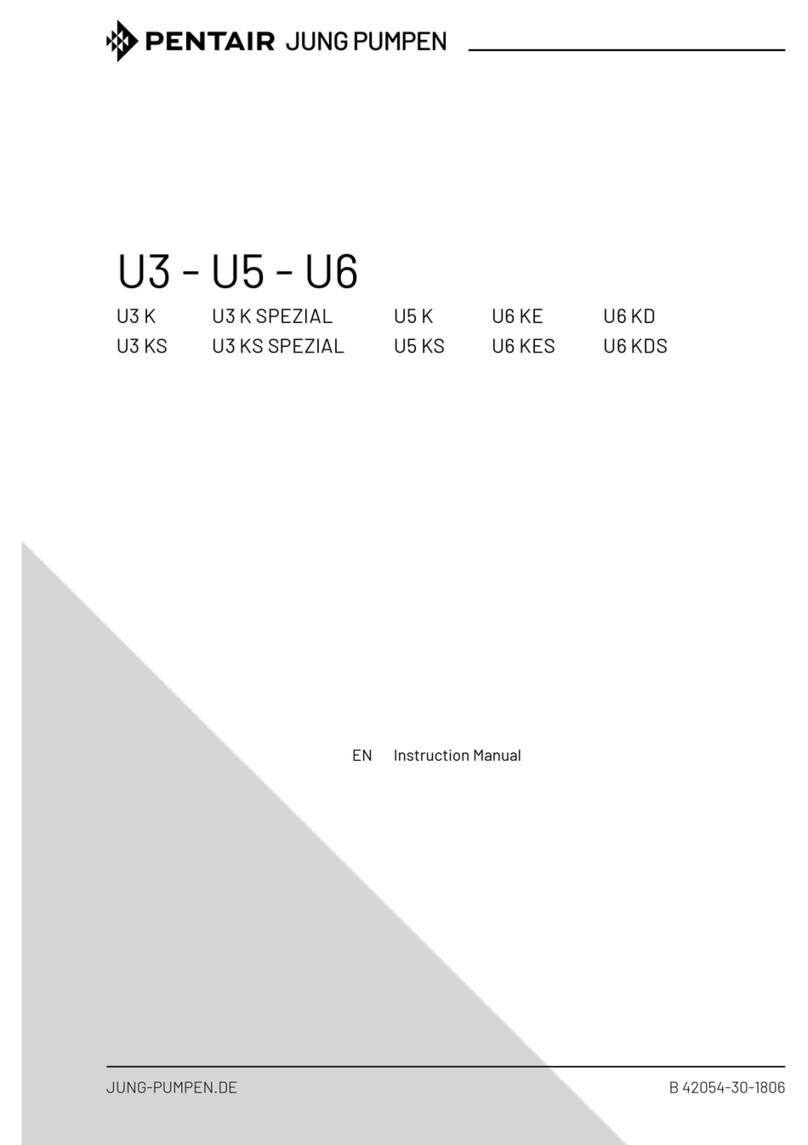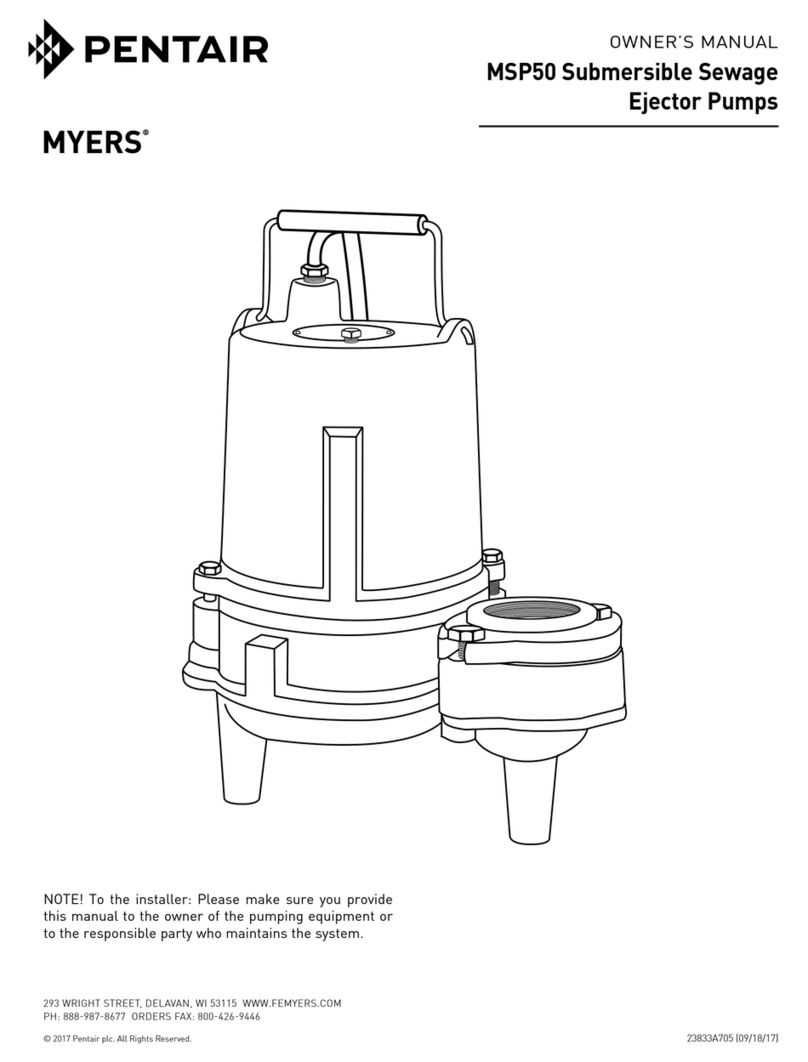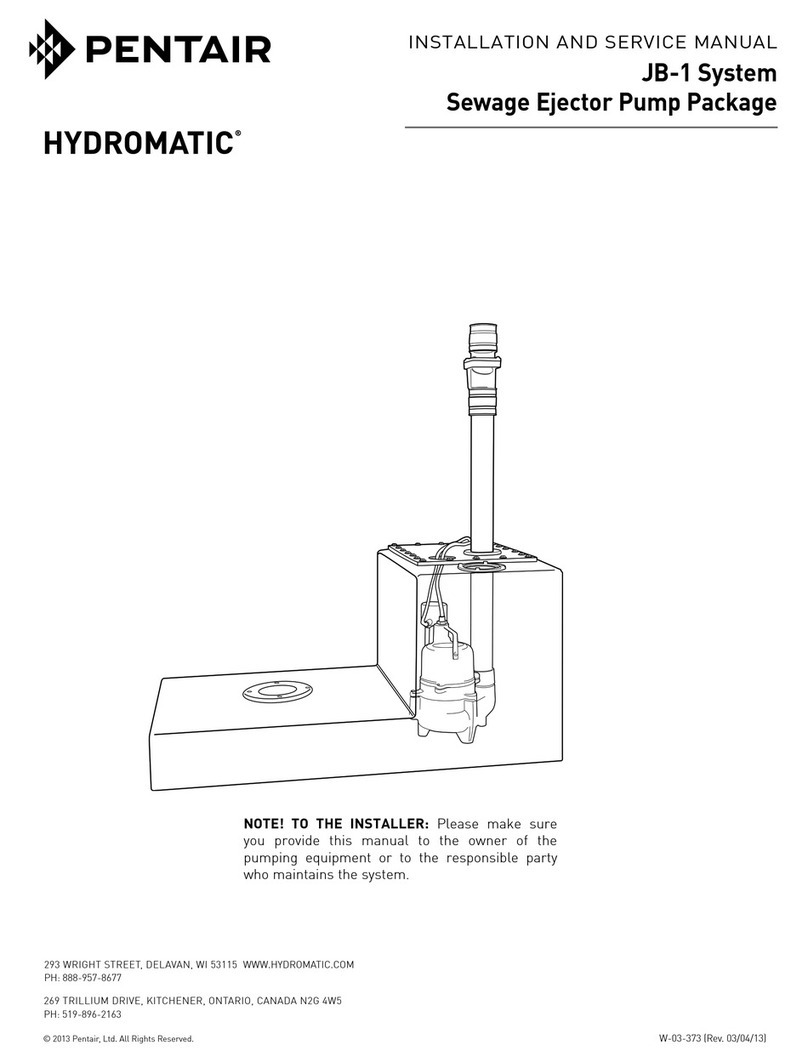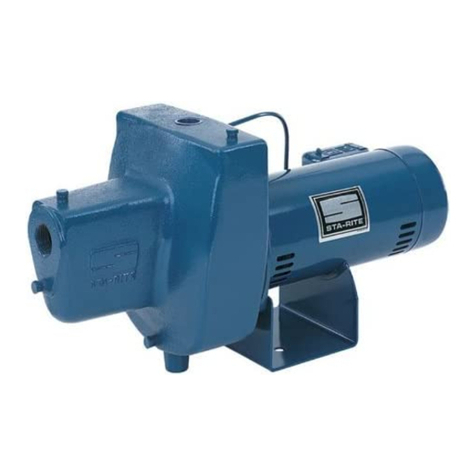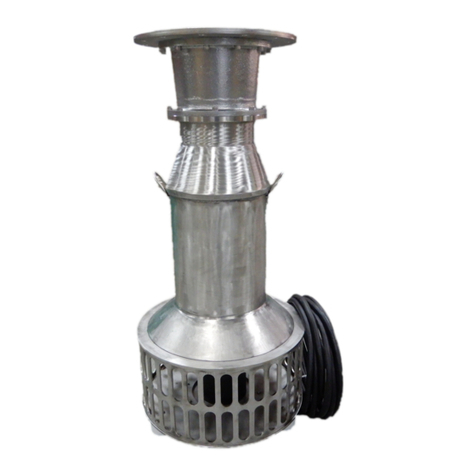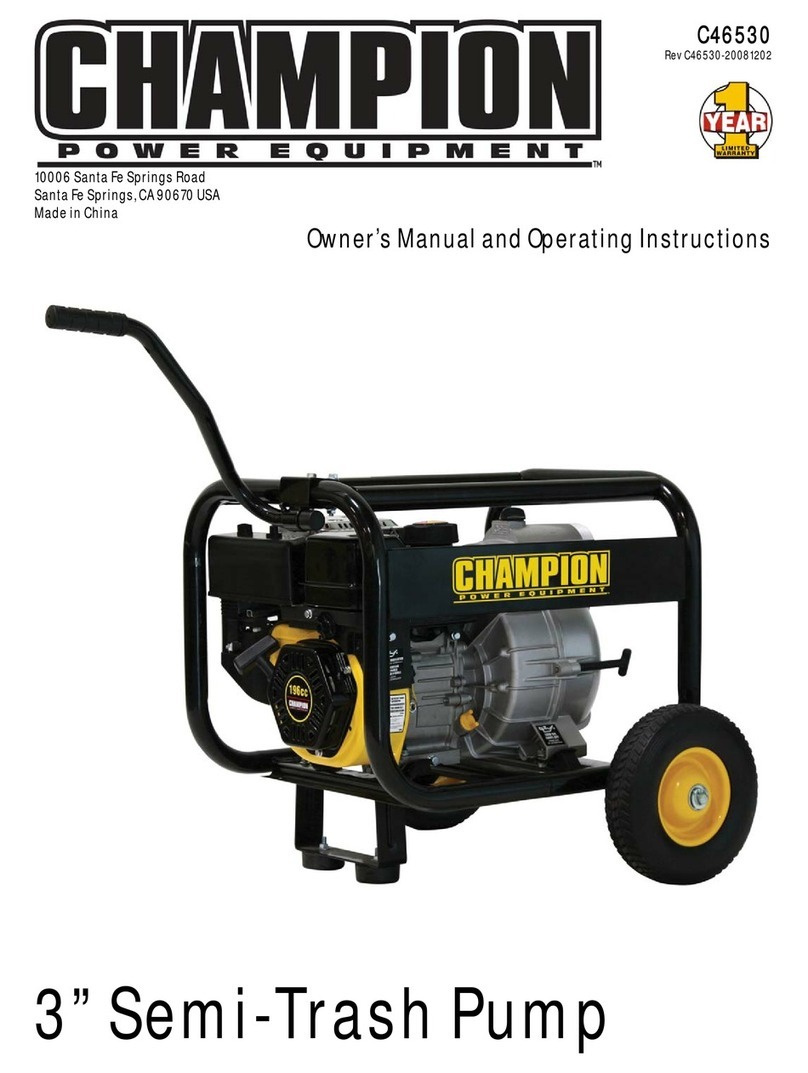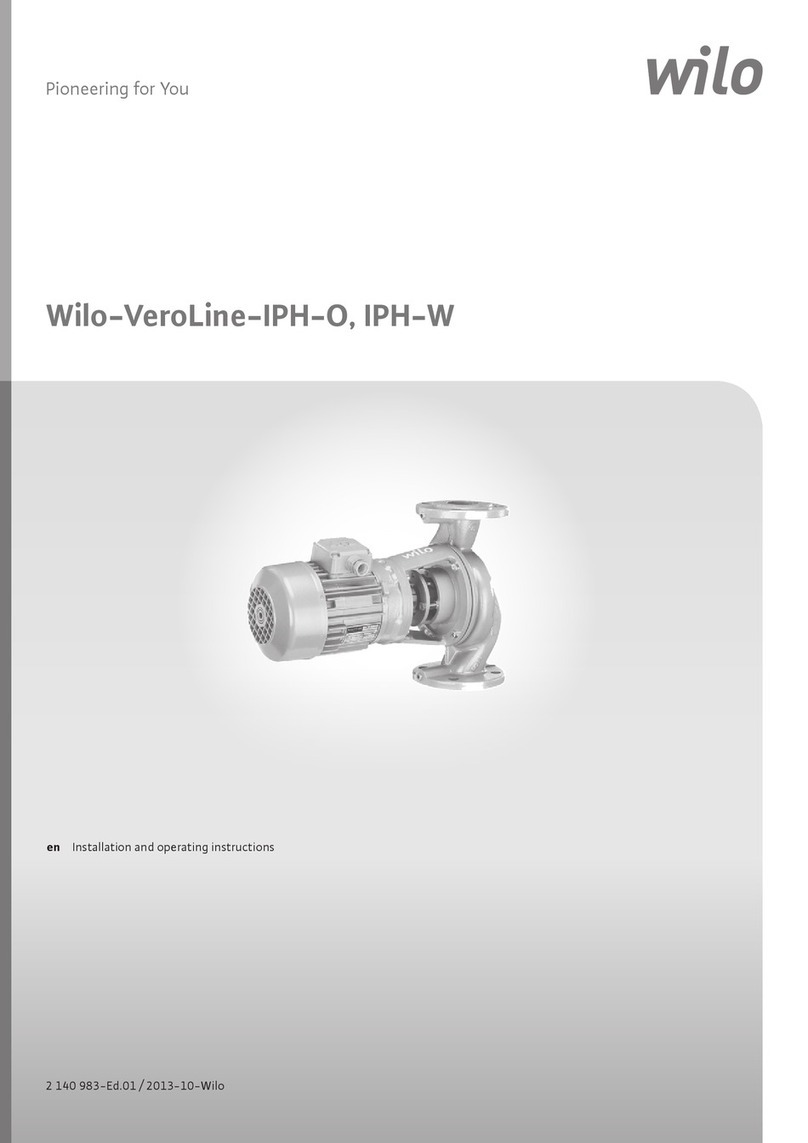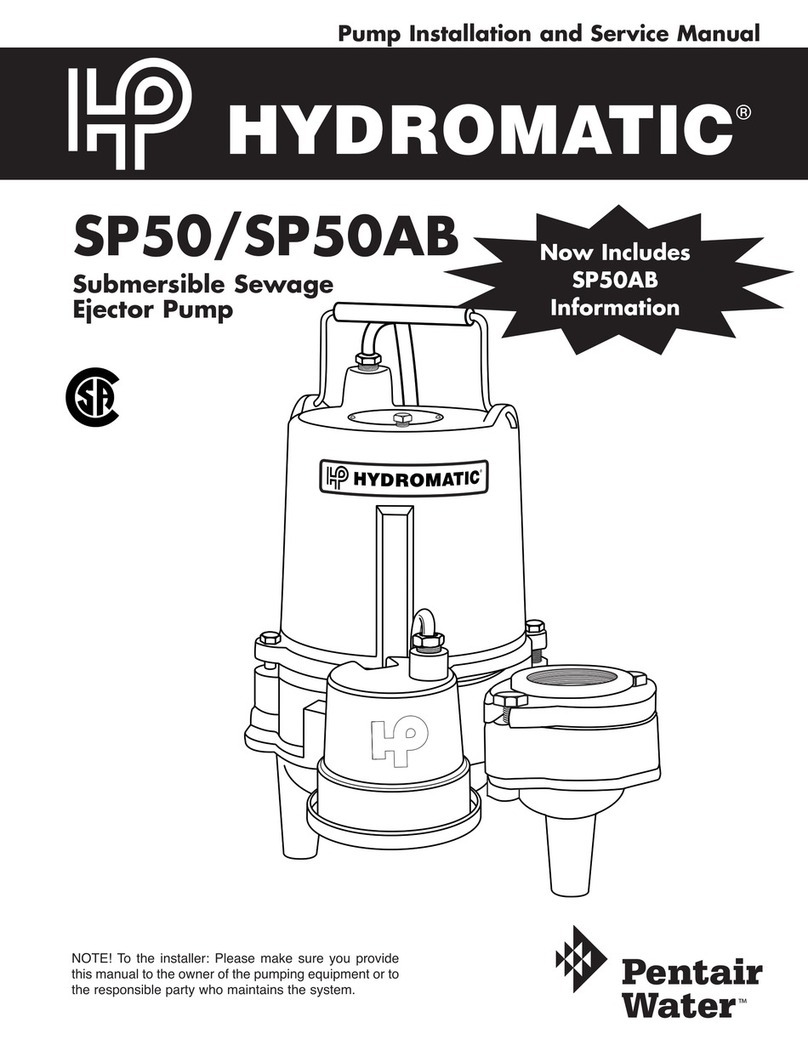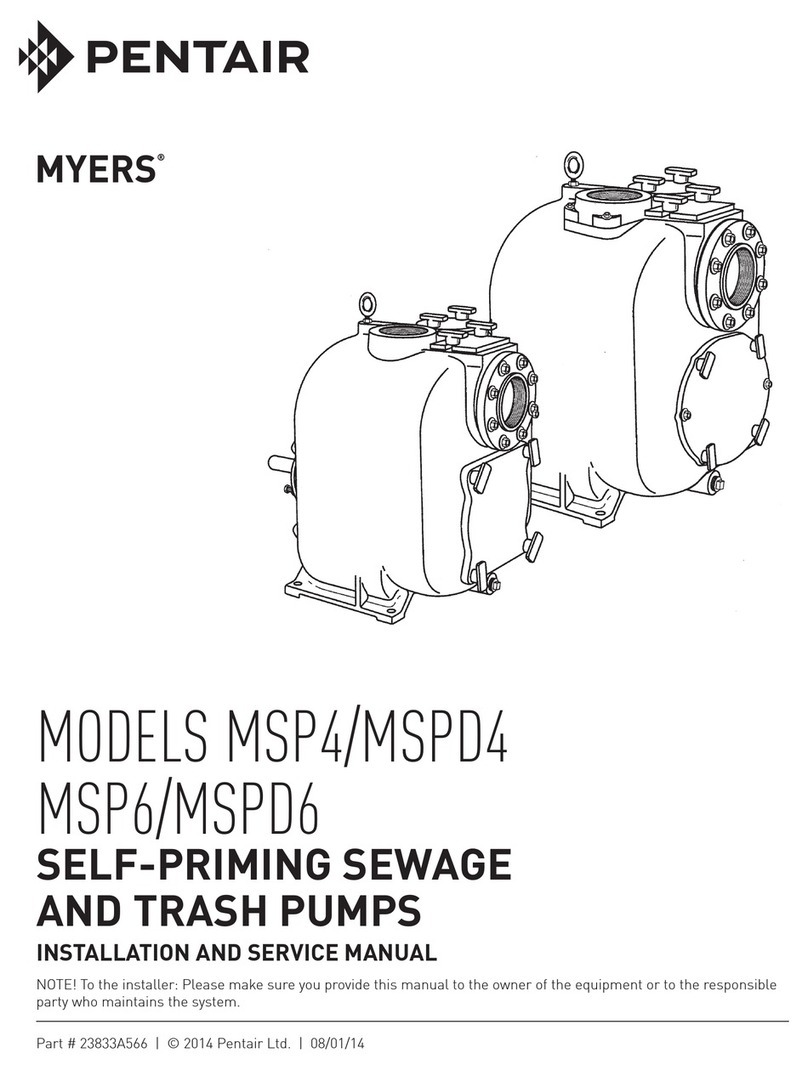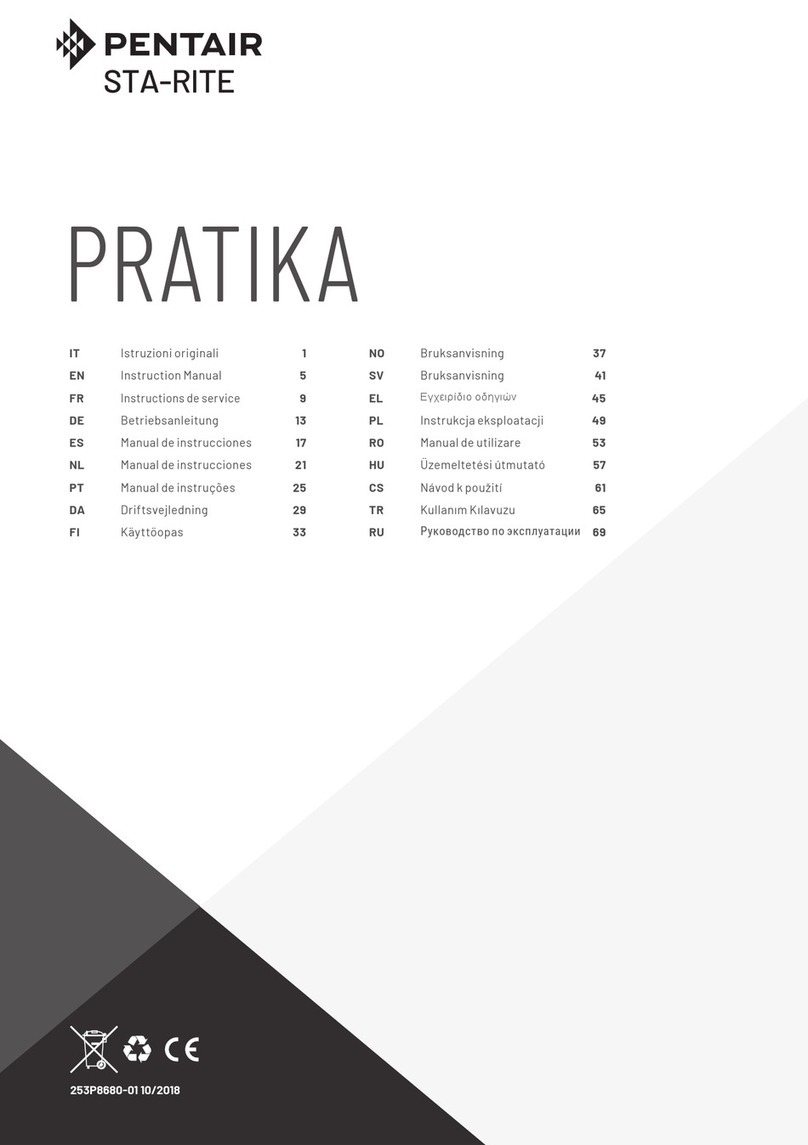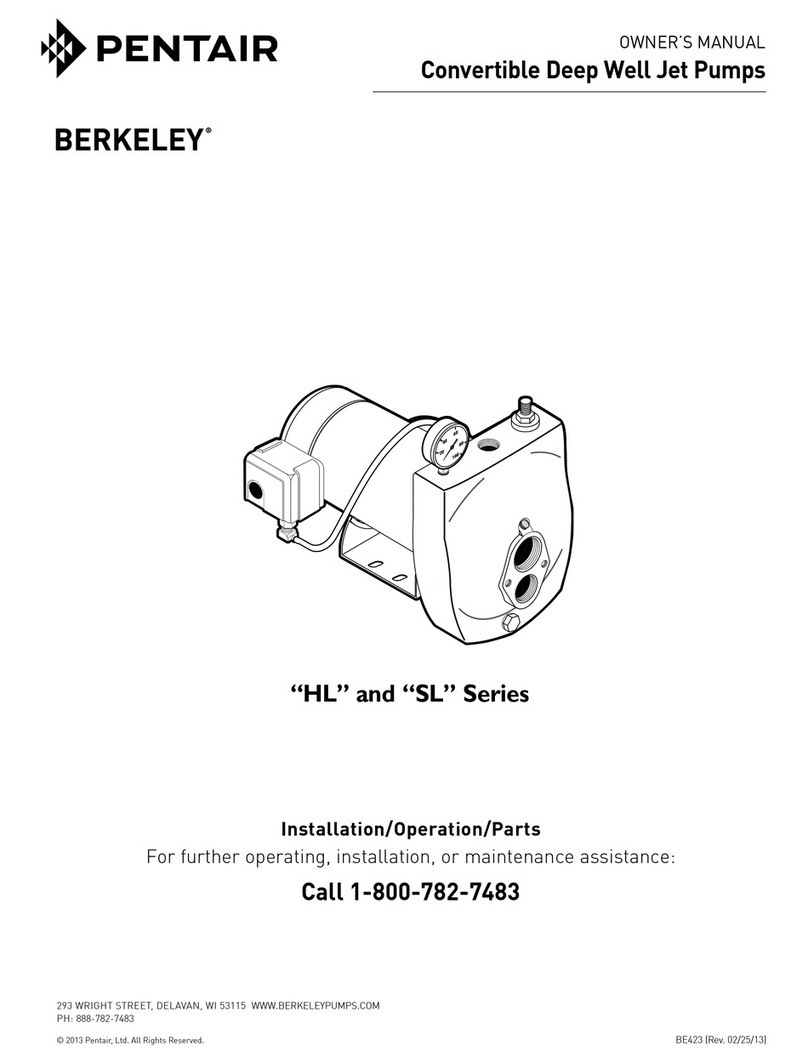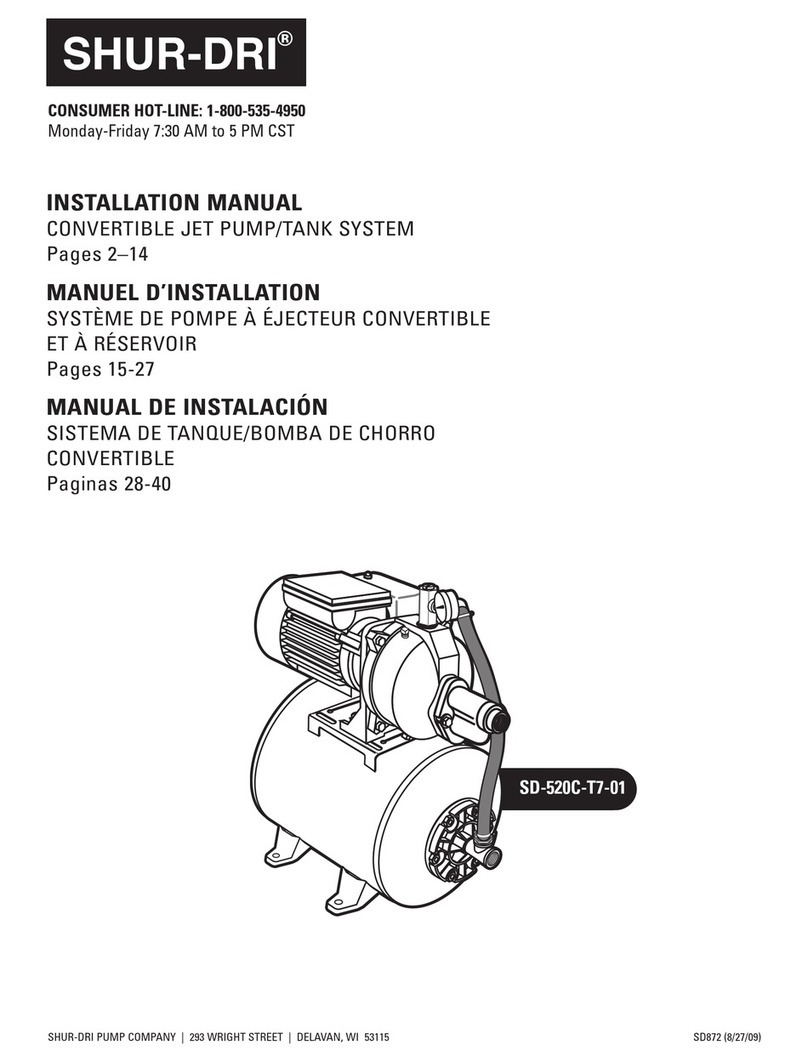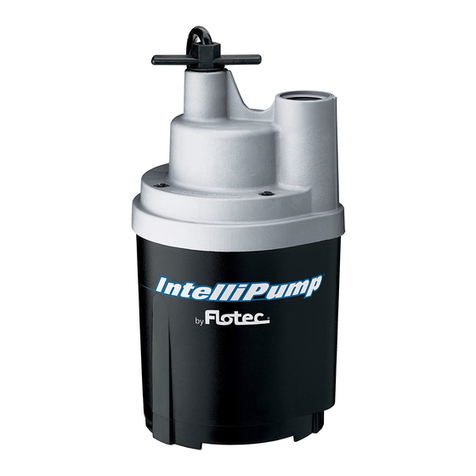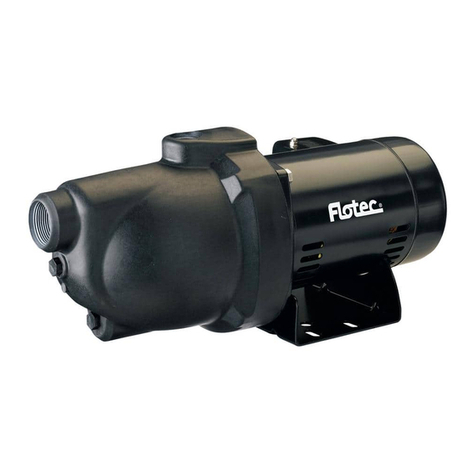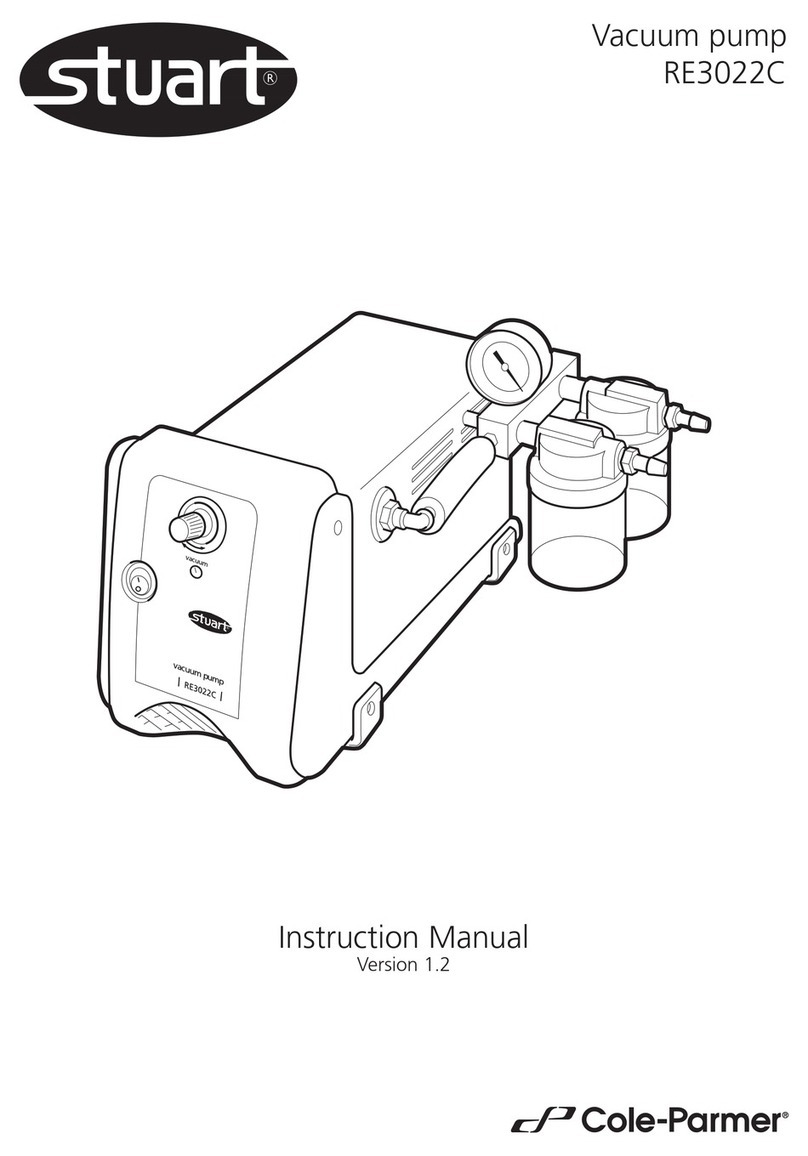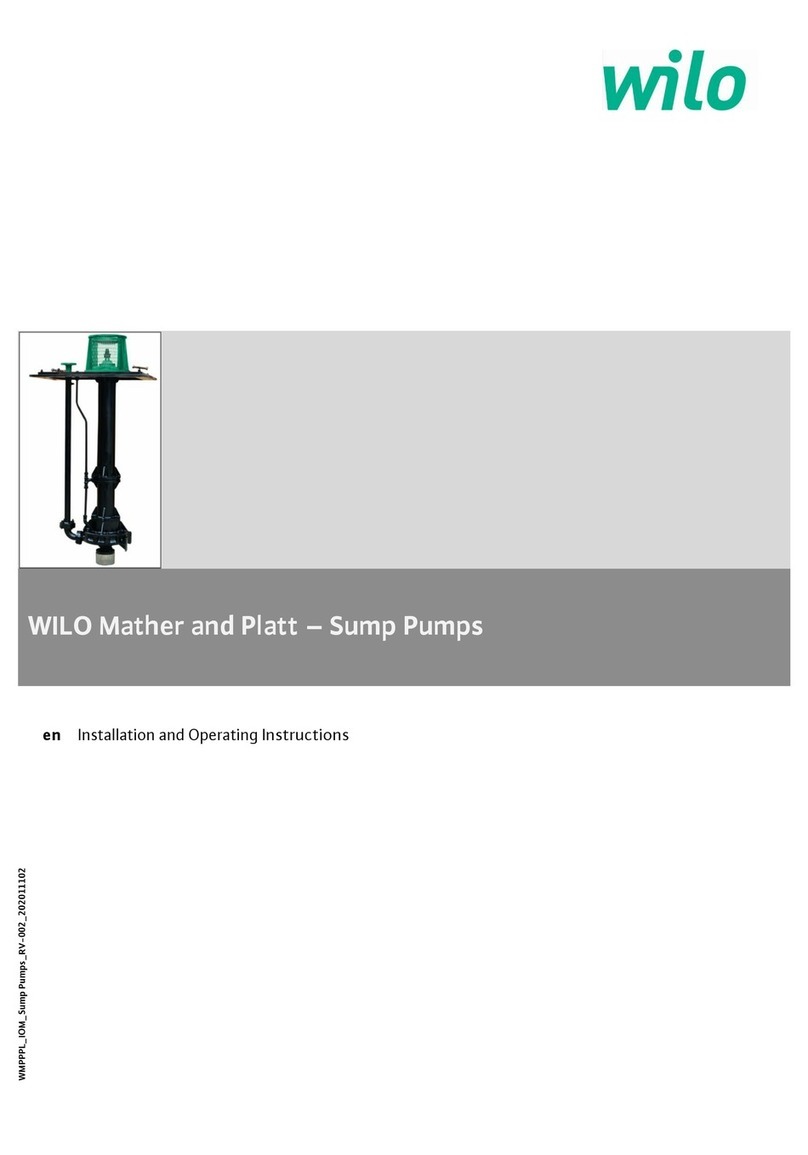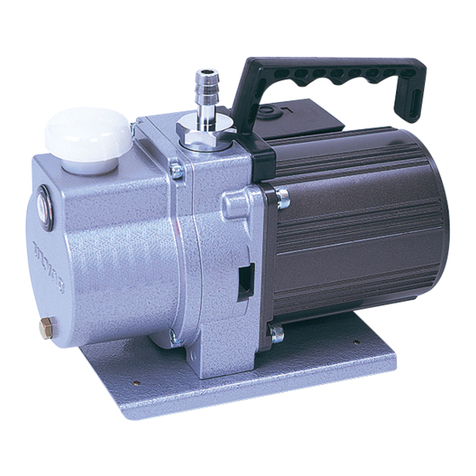
23833A632 11/12/12
7
EXPLANATION OF THE SERVICE CHART
A. Pump priming is usually not necessary when the
pump is installed correctly. However, there are
certain unusual conditions which may make it
necessary to prime the pump to get the pumping
action started. Priming will be required under
conditions where it is impossible for the piston to
displace the air in the pump and replace it with
water. This could be caused by a high suction
lift (high from the water supply to the pump), the
valves being stuck on the seat, such as after
pumping a sticky fluid, or it might be caused by
valves sticking due to extreme corrosion of the
valves and seats. A pump will not prime readily
if someone has tampered with the valve springs
causing them to exert undue pressure of the valve
plates against the valve seats. When the pump
appears to need priming this condition can be
checked by pouring water into the cylinder body
through one of the valve cap openings or into
the pump discharge opening at the same time
operating the pump to work the water into the
cylinder and valve passages.
B. Frequently a gate valve is installed in the suction
line between a tank or pressure line and pump
sediment chamber. This valve is usually installed in
the line to shut off the supply source for cleaning
sediment chamber or for pump repairs. If this valve
is closed or even partially closed it will interfere
with the flow of water to the pump suction to
such an extent that the pump will not perform to
full capacity. If the valve is partially closed it may
cause severe knocking and vibration of the pump
because the water cannot flow into the cylinder
cavities fast enough.
C. A sediment chamber should be installed in the
suction line between the gate valve and the
pump suction.
The strainers in these sediment chambers are of
more than adequate capacity to allow a free flow
of the liquid to the pump. However, because of its
normal function of collecting sediment, the strainer
may become severely clogged and in some cases,
it will completely stop the flow of liquid to the
pump. The length of time the pump may operate
before it is necessary to clean the strainer will
depend upon the type to liquid pumped. After the
pump has been used a short period the operator
will soon become familiar with the amount of
running time between strainer cleanings.
D. Any piston pump, when operated at high pressure,
will not operate satisfactorily or quietly if a mixture
of air and water is allowed to enter the pump
suction. For this reason, a small air leak in the
suction line will cause the pump to knock and
vibrate excessively. This holds true only for a small
air leak which allows the pump to draw a certain
amount of water mixed with air on each stroke of
the piston. A large air leak will cause the pump to
lose prime after which it cannot be reprimed until
the air leak is stopped. Air leaks may occur at the
joints of the suction line piping, at the gate valve in
the suction line, at the gasket sealing the cap on
the sediment chamber or by a crack in the suction
wall of the cylinder body, such as might be caused
by freezing if the pump is not properly drained
in freezing weather. There is also a remote
possibility of air drawing past the piston packing
on the suction stroke if the piston packings are
badly worn.
E. Badly worn packing or valves and valve seats will
cause a serious drop in pump capacity. This will
be indicated by a drop in pressure when guns are
turned on. Worn packing is very easy to detect
because of the water leakage. The packing should
be replaced just as soon as this excessive leakage
is noticed. If it is allowed to continue some of the
material may work past the piston rod seals into
the pump crankcase. Water in the pump crankcase
will cause severe corrosion of the bearings causing
them to fail. Worn valves can be detected only by
visual examination of each valve assembly. The
most prevalent cause of valve wear is the use of
highly abrasive liquids. This will cause the valve
and valve seat to wire cut. The cut starts as a very
small groove but increases very rapidly once the
valve starts to leak through this groove. Cutting will
usually be much more evident on the valve plate
in flat valve pumps. If the valve plates are replaced
as soon as they start to show this cutting action it
will prevent the valve seat from becoming cut in a
similar manner and keep the cost of replacement
parts to a minimum.
F. Pump cylinder bodies must withstand an extreme
amount of shock and pulsation while the pump is
in operation. If the pump is allowed to freeze, due
to not being drained, the freezing may crack the
cylinder body walls in almost any location. If the
crack should occur on the suction valve or cylinder
portion of the body it may allow a small amount of
air to enter on the suction stroke and cause noisy
operation or a decrease in pumping capacity. If the
crack develops in the walls between the cylinder
cavities or discharge valve cavity it may allow the
water to flow from one cavity to the adjacent cavity
and rob the pump of its effective displacement.
This will not cause noisy operation but will reduce
the pump capacity and may show up as a drop in
pressure when the discharge is open.
G. The holes in gun or nozzle discs are continually
subject to wear because of the high velocity of the
liquid through the holes. Naturally they wear much
faster if there is any abrasive or solid material in
the liquid. If the holes become worn too much
they may allow a higher rate of discharge than the
pump is able to provide and a drop in pressure
will be noticed. This can quickly be checked by
reducing the number of nozzles or guns and at
the same time watching the amount of overflow
from the pressure regulator. If there is considerable
overflow, even though a drop in pressure has been
noticed, it is an indication that the regulator valve
is worn rather than the gun or nozzle discs.












